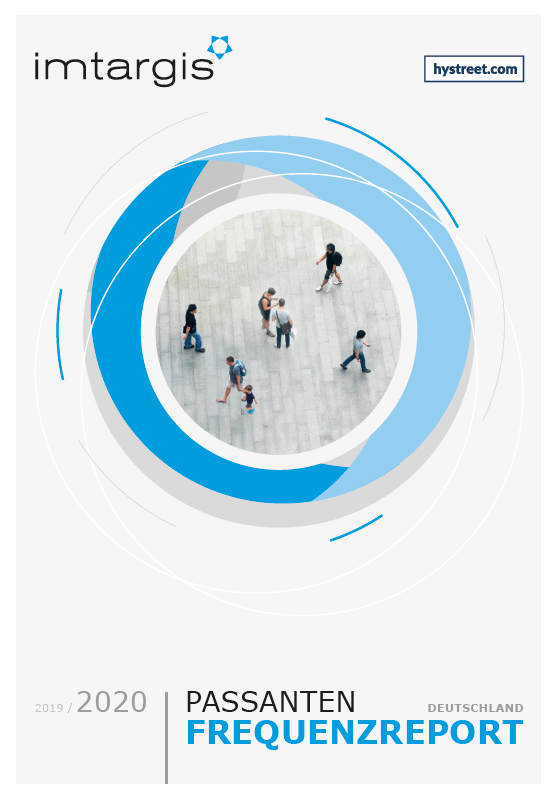Footfall report
We support you with individual analyses and reports. Please contact us.
Basic portfolio
- Including location maps and structural data
- Analysis of hystreet.com frequencies
- Benchmarking with comparison periods
- One-time
Additional options
- Daily update until 12.00 noon of the following day
- Weekly update until 12.00 noon of the Monday of the following week
- Display of pedestrian density per hour as an indicator of overcrowding (live evaluation and early detection)
- Service period on request: e.g. until May 31st or June 30th
Pedestrian frequency report



![]()
Download (available in German):
Pedestrian Frequency Report 2020
![]()
Download (available in German):
Pedestrian Frequency Report 2020
Presently, frequencies are a very important and highly interesting topic. imtargis, together with its cooperation partner hystreet.com, has published the Pedestrian Frequency Report Germany for the year 2020. The retail-relevant pedestrian frequency for the year 2020 was used as a reference basis for the report. It expresses the average frequency per hour during typical retail opening hours (Monday to Saturday from 10 a.m. to 8 p.m., excluding public holidays). Data examined include the main shopping locations of 60 German cities.
Based on the retail-relevant pedestrian frequency for the year 2020 as a key figure, a ranking was drawn up enabling direct comparability of individual locations and sites. In addition, the comparison with 2019 allows the development of frequencies at the chosen locations, which should be assessed against the background of the Corona pandemic. Comparing 2019 to 2020, the progressions offer further, important insights into frequency levels and fluctuation trends.
Presently, frequencies are a very important and highly interesting topic. imtargis, together with its cooperation partner hystreet.com, has published the Pedestrian Frequency Report Germany for the year 2020. The retail-relevant pedestrian frequency for the year 2020 was used as a reference basis for the report. It expresses the average frequency per hour during typical retail opening hours (Monday to Saturday from 10 a.m. to 8 p.m., excluding public holidays). Data examined include the main shopping locations of 60 German cities.
Based on the retail-relevant pedestrian frequency for the year 2020 as a key figure, a ranking was drawn up enabling direct comparability of individual locations and sites. In addition, the comparison with 2019 allows the development of frequencies at the chosen locations, which should be assessed against the background of the Corona pandemic. Comparing 2019 to 2020, the progressions offer further, important insights into frequency levels and fluctuation trends.














